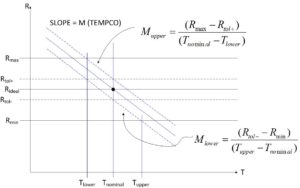You would have to be living under a rock to not notice the sweeping changes that are taking place in the American economy. From my viewpoint in the tech sector, this transformation began just over two decades ago, and has been picking up speed over the last ten years or so. Technological advances, combined with social forces, are interacting in an exceedingly complex manner, turning the very nature of “work” and the process by which economic value is created, on its head. We are witnessing a transformation of the economy even greater than that of the Industrial Revolution of the 19th century, and while we collectively debate the pros and cons of the changes that we see taking place, the disruption of the economic status quo currently underway will not be fully understood for at least another generation. Historical clarity is not unlike a rear-view mirror – it only becomes possible to understand what happened in retrospect, when the entire “big picture” is visible. When we are in the midst of any kind of tempest, it is generally impossible to see the overall picture since we are focusing on the small details that are in front of our faces.
The technological miracle that is the Internet has transformed our lives in ways far too numerous to count, but at its most fundamental level the Internet has created an environment where wideband communication between any two points on the earth is essentially instantaneous and is accomplished at practically zero cost. This reality makes it possible for individuals in many “information-based” industries to “work from anywhere” instead of being attached to a specific location where the technological and social infrastructure necessary for their job exists. We have all read about the rise of the “Digital Nomad”, that lucky individual who develops Java code while sitting at an outside café in Phuket, Thailand, and is planning to drift across Asia and Europe over the next year while they complete the ten projects that they have queued up in their email Inbox. We have also read about many not-so-lucky individuals who are out of work because their jobs have been moved to some other part of the world, where individuals can easily be found to perform the same work at a fraction of the cost. I’m sure many of you reading this article right now know someone who has been made redundant through the process of “job off-shoring.”
Coincident with the ground-shaking changes brought upon us by the reality of the Internet (and in many cases fueled by it) is the belief that life should be devoid of any risk. This is especially true in American society, where many people believe that protection from even the slightest form of injury, whether physical, financial, or social, is somehow a “right” that must be protected. In the event that something bad does indeed happen, there is an immediate search to find a responsible party that can be blamed and forced to provide compensation. A close corollary to this is the belief that, as individuals, we should be free of having to make sacrifices (lifestyle, financial, or other) in our lifestyle choices, i.e., lifestyle choices come with no additional responsibilities.
What does a collective belief in “risk-free existence” have to do with the American economy? Consider the effects of the following:
- Multiple opinion polls indicate that more than half of all Americans believe that health care is a fundamental right
- A substantial number of Americans believe that both men and women are entitled to paid leave to care for a newborn baby
- The expectation that all individuals possess the right to be protected from anything that might possibly be construed as “offensive” or “unpleasant”, without having to take into consideration the rights of others (this can be thought of as a symptom of the breakdown of what the Greek philosopher Aristotle called the “civil society”)
- The rejection of belief in a set of absolute moral standards for behavior and interaction between individuals. Without a common agreement of what is considered to be “moral”, interactions between individuals are governed largely by a legal framework, which by its very definition is adversarial in nature
I could continue with other examples, but for now that would take me too far afield from the topic at hand, which is the upheaval we are seeing in the economy of the United States and the rest of the world. The four items that I have listed above are all illustrations of the erosion of personal responsibility that is now taking place in American society. Using both the political process and the legal system as tools, many different groups of individuals have been successful at enacting laws that incrementally take away the burden of personal responsibility and place that responsibility on other individuals or groups. Caught in the crossfire of this legislative and judicial mayhem is “Corporate America”, frequently viewed by both politicians and the public as bottomless pits of money that are expected to shoulder all the responsibilities of the individuals that they employ. With an ever-increasing burden of rules that dictate to employers how they must interact with their workers, the employer-employee relationship has become so complex that an entire new industry (commonly known as Human Resources) has developed in order to manage it.
Many of you are likely thinking, “Wait a minute — Human Resources departments have been around for decades… they are the folks that manage the recruiting process.” That is true, however recruitment is no longer the primary focus for HR departments, and hasn’t been the primary focus for well over a decade. The primary focus of HR departments nowadays is managing the boatload of regulations that govern the relationship between employer and employee, the main goal being protection of the organization from actions the employee may take against them. Rather than being viewed as assets to a company, employees are increasingly being viewed as potential liabilities that increase the company’s operating costs in ways that are often unpredictable. The end result of this process is quite predictable, and it is easy to see everywhere in the economy:
- Employers intentionally understaff departments (this is euphemistically called “running lean”), and oftentimes are less likely to replace workers that leave the company
- Employers increasingly rely on outside contractors to provide them with a labor force. This allows the employer to avoid taking on the financial and legal liability associated with an employer-employee relationship.
It is the second item in the above list that I wish to focus on in the discussion that follows, and while it is likely applicable to many different industries, I want to state at the outset that I am writing from my own perspective as an engineer working in the electronic technology sector.
Like it or not, the tendency of companies to utilize outside contract engineering for product development is on the rise, and will likely continue into the foreseeable future. In effect, many companies are doing the equivalent of “voting with their feet” as a reaction to the ever-increasing encroachment of government regulation into their operations. Rather than knuckling under to government mandates regarding employees, companies are simply opting to “not play the game” – if a company has no employees, it cannot be held liable for the actions of an employee, nor does it need to incur all of the additional costs mandated by the government. Perhaps the finest example of this is the recent “Fight for Fifteen” movement – a group of activists lobbying state and local governments to pass laws increasing the minimum wage to $15 per hour. The success of this particular lobby has been mixed, however in places around the country where they have been successful, the long-term result has been entirely predictable:
- Reduction in the number of working hours per each employee
- Closing entire businesses and moving them to other jurisdictions without minimum wage laws
- Adopting automation in a business where it did not previously exist
The last item above is a boon for tech workers like myself – bring on the robots!
In whatever form job outsourcing takes in the tech sector, its increasing presence in the American economy means that, as engineers, we need to take responsibility for our own careers, and look at ourselves as our own enterprise. This reality is a double-edged sword – while the thought of working independently and being the champion of your own destiny can be exciting, it requires a level of resourcefulness and motivation that is substantially higher than what is required of most individuals who have a traditional employer-employee relationship with a company. Rather than having an employer provide them with a steady stream of work that produces economic value, it becomes the responsibility of the individual to seek out and secure work on their own. This is an inherently difficult task, as it requires skills in marketing, business development, sales, project management, finance, and probably a few other skills that escape me at the moment. This preliminary list is enough to use as a starting point – engineers and other tech workers are generally terrible at most of the skills that I have listed, and even if some tech workers understand the intricacies of business development and finance, it is likely that they don’t really enjoy doing those things.
The requirement that a tech worker (or anyone else) become their own enterprise when they work as a contractor exposes a critical, but often overlooked role that companies play in the economy as a whole. Companies, through their very existence, act as a “force multiplier” in the economy, by concentrating labor and expertise in one place in order to create economic value that is greater than the sum of the individual contributions made by the workers. A simple example – 1000 engineers working in their individual garages cannot design and build a Boeing 787 Dreamliner, but 1000 engineers working together in a factory certainly can! What is equally important to observe is that a significant component of the value that is created through collaborative effort is the institutional knowledge and expertise that is contained in the minds of the individual employees. So long as a company maintains a body of employees that are committed to their work (and to the company that employs them), it retains the expertise that enables the company to compete, and hopefully excel in the marketplace. The employee benefits from this relationship as well, primarily in the form of a steady and regular income. It is not just the effort of the individual employee that creates the value that results in their income – it is closely tied to the force multiplication effect that the company provides by concentrating expertise in one place.
Perhaps in this day and age the previous paragraph could be considered heresy – after all, the only responsibility a company has is to its shareholders, right?
This article is not meant to be a political position paper for GoldSpire Design, but is meant to provoke thought among all of my readers. I began this article by discussing the Internet and how it is fueling a transformation in the world economy that is nothing less than apocalyptic, but in a way that is perhaps more equitable than the Industrial Revolution. The Internet gives everyone equal access to the economy and the marketplace of ideas, serendipitously at the same instant that many tech workers will need to become their own independent profit centers. Freedom is a wonderful thing, but one needs to keep in mind that it is also unsympathetic.
The intent of this article is to be an introduction to a larger discussion that embraces the following questions:
- In a world of individual consultants, how do each of us seek out and secure economically valuable work?
- What effect will the large-scale outsourcing of tech sector expertise have on individual companies, as well as the economy as a whole?
- What new types of business models and business relationships will need to be developed among individual consultants to create a “force multiplier” effect?
- Is it possible for tech workers who are transitioning from the traditional role of an employee to independent consultant to retain their standard of living, given the absence of the “force multiplier” effect of being associated with a company?
Over the next several installments, I will discuss some of my thoughts in these areas at greater length. In the meantime, I encourage all my readers to give me your thoughts, ideas, and opinions regarding these very important issues. That these issues are important is confirmed by many discussions I’ve had with my colleagues over a long period of time. We are all thinking the same thing, so I’m sure many of my readers out there are thinking about them as well.




Recent Comments